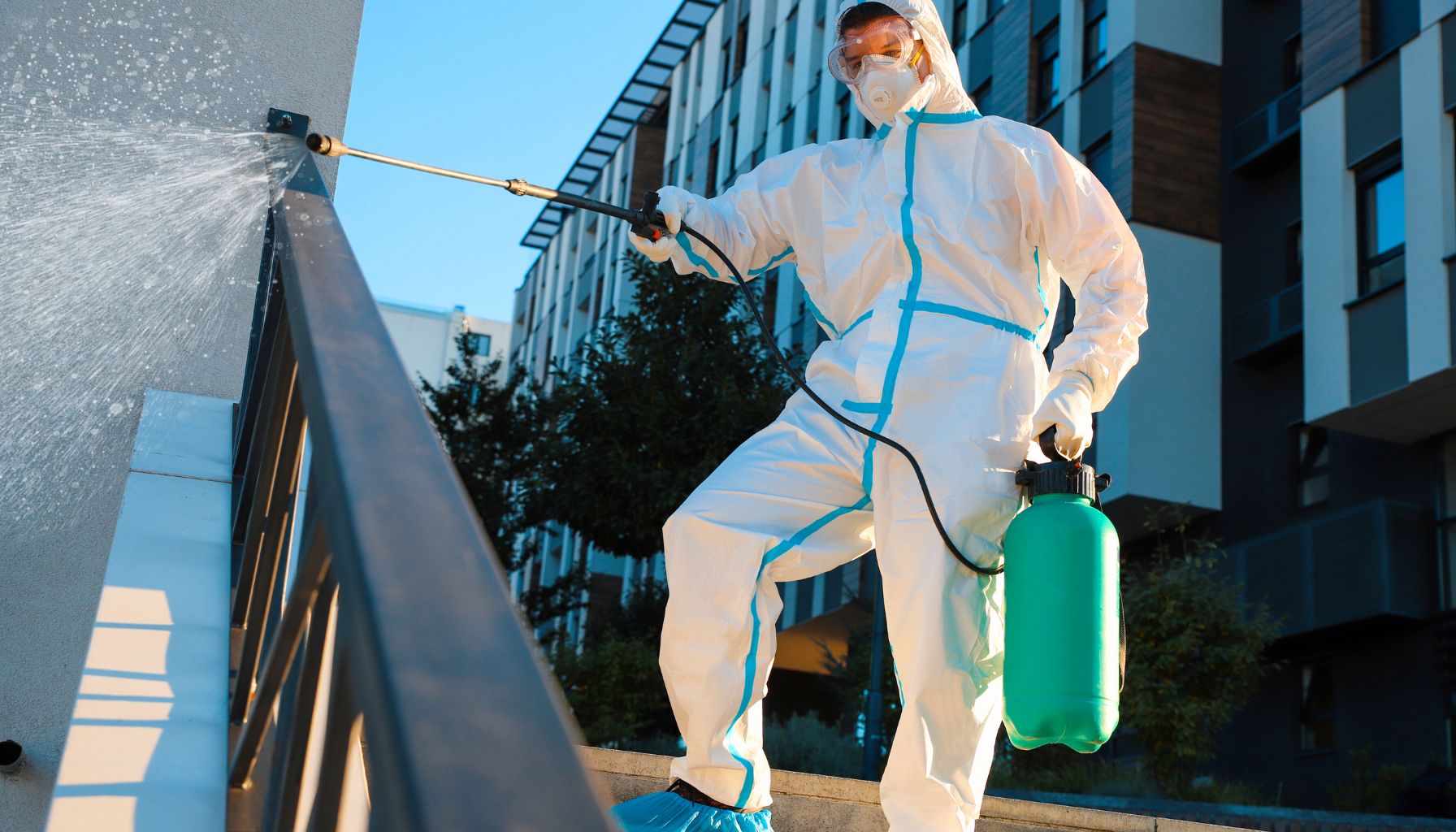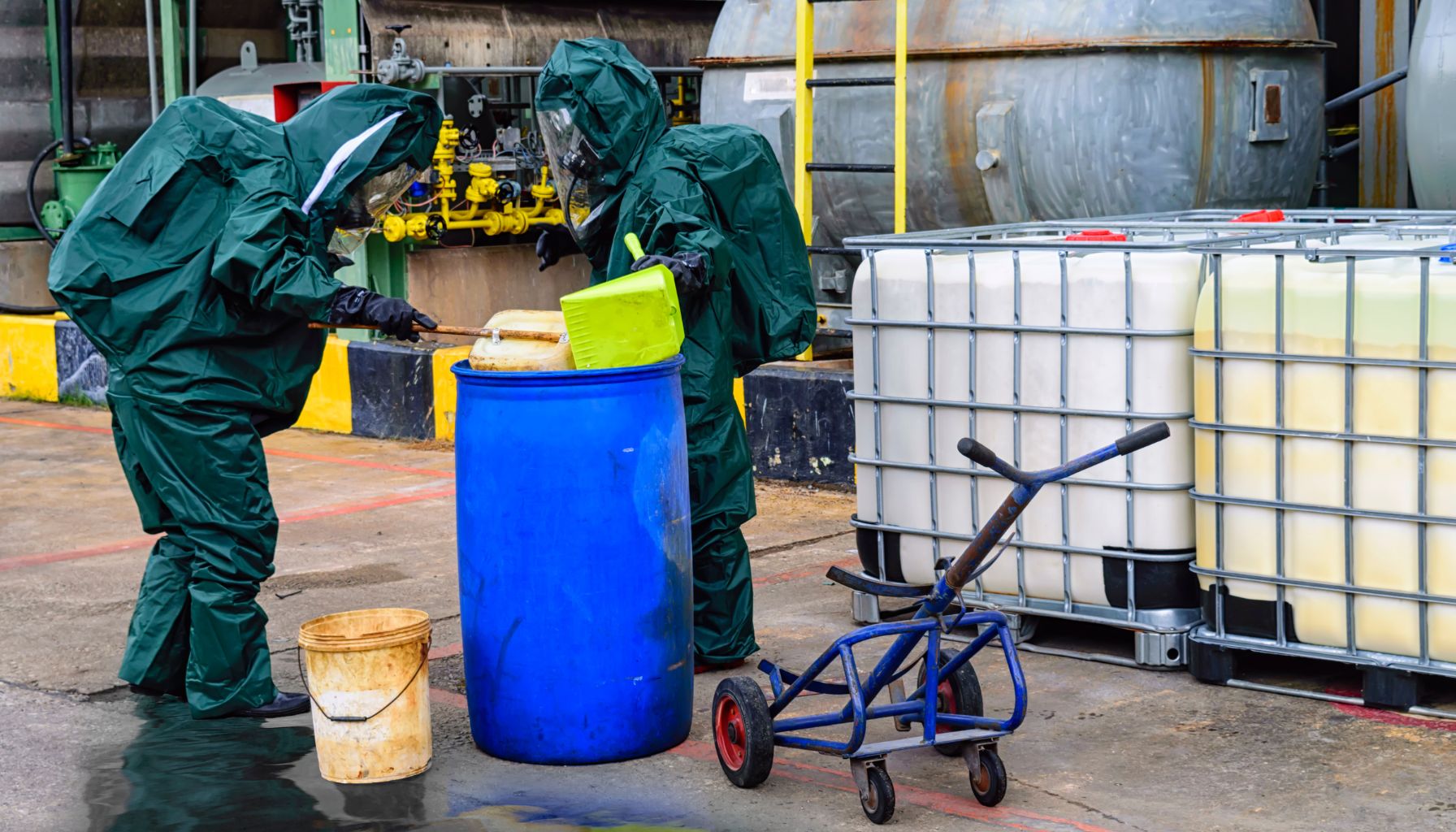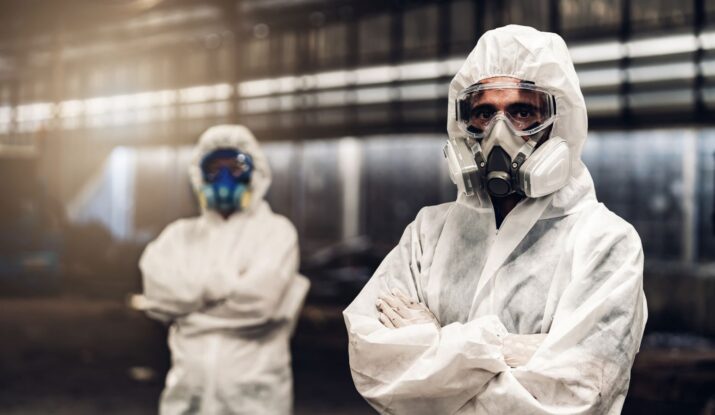In “Ensuring Biohazard Cleanup Safety: A Guide to Protocols and Procedures,”
You will discover the essential guidelines and steps to ensure a safe and effective cleanup when dealing with biohazards.
This comprehensive guide walks you through the intricacies of biohazard cleanup, from recognizing potential hazards to implementing proper protocols and procedures to protect yourself and others. With this valuable resource, you will gain the knowledge and confidence needed to navigate the challenges of biohazard cleanup with utmost safety and care.

Understanding Biohazards
Biohazards are a serious concern in various fields, including healthcare, research, and waste management. Understanding what biohazards are and the risks they pose is crucial for ensuring safety in these industries.
Definition of biohazards
Biohazards refer to biological agents or substances that have the potential to harm living organisms, including humans. These hazardous materials can come from various sources such as blood, bodily fluids, pathogens, or even contaminated items.
Types of biohazards
Biohazards are categorized into four main levels based on the potential risks they pose. Level 1 biohazards are the least dangerous, while Level 4 biohazards are the most severe.
Level 1 biohazards include bacteria, viruses, and other microorganisms that are unlikely to cause disease in healthy individuals. Level 2 biohazards include bacteria and viruses that can cause mild to moderate illnesses. Level 3 biohazards consist of pathogens that can cause severe diseases, often requiring specialized treatment. Level 4 biohazards are extremely dangerous and can cause life-threatening illnesses, such as Ebola or Marburg viruses.
Risks associated with biohazards
Biohazards pose significant risks to human health and the environment. Exposure to biohazardous materials can lead to infections, diseases, and even death. It is crucial to implement proper safety measures and protocols to minimize these risks.
The risks associated with biohazards are not only limited to direct exposure. They can also spread through contaminated surfaces, air, or water, making it essential to handle and dispose of biohazardous materials appropriately.
Personal Protective Equipment (PPE)
Personal Protective Equipment (PPE) plays a crucial role in ensuring the safety of individuals involved in biohazard cleanup. It helps prevent direct contact with hazardous materials, reducing the risk of infections and illnesses.
Importance of PPE in biohazard cleanup
Wearing appropriate PPE is vital for protecting yourself from potential biohazards. PPE acts as a barrier between you and the hazardous materials, reducing the chances of exposure. It is essential to understand the importance of using PPE correctly and consistently to ensure your safety.
Types of PPE required
In biohazard cleanup, various types of PPE are required, depending on the level of biohazard and the nature of the cleanup task. Some common types of PPE include:
- Gloves: Disposable gloves made of nitrile, latex, or vinyl are typically used to protect your hands from direct contact with biohazardous materials.
- Masks and Respirators: Depending on the situation, surgical masks or respirators may be required to protect against airborne biohazards.
- Gowns or Coveralls: Protective gowns or coveralls are crucial for covering your body and preventing any direct contact with biohazards.
- Eye Protection: Safety goggles or face shields are necessary to shield your eyes from potential splashes or sprays.
Proper donning and doffing procedures for PPE
To ensure the effectiveness of PPE, proper donning (putting on) and doffing (taking off) procedures must be followed. Failing to adhere to these procedures can lead to contamination and compromise your safety.
When donning PPE, start by putting on gloves, followed by other protective clothing. Make sure all pieces are secure and properly fitted. During the doffing process, remove the PPE carefully to avoid any potential contact with biohazardous materials. Dispose of used PPE as per the guidelines to prevent the spread of contamination.
Initial Assessment and Risk Evaluation
Before beginning any biohazard cleanup process, it is crucial to conduct a thorough assessment to identify potential risks and hazards. This assessment helps determine the appropriate level of precautions and strategies needed for effective cleanup.
Conducting a thorough assessment of the biohazard
The first step in the initial assessment is to identify the presence of biohazardous materials and their level of contamination. This involves evaluating the extent of the problem and identifying the sources of the biohazards.
A careful examination of the area will help determine the resources required, such as the types of equipment, cleaning agents, and personnel needed for the cleanup process. Assessing the location and understanding the potential risks involved will guide the development of an effective cleanup plan.
Identifying potential risks and hazards
During the assessment, identifying potential risks and hazards is crucial for developing appropriate cleanup strategies. Understanding whether the biohazard consists of bloodborne pathogens, infectious diseases, or chemicals will determine the necessary precautions and protective measures.
Additionally, assessing the presence of sharps or contaminated objects that could cause injuries to workers is essential. By identifying these risks, appropriate measures can be taken to prevent accidents and minimize exposure.
Assessing the level of contamination
When assessing the level of contamination, it is important to consider the severity of the biohazard and the extent to which it has spread. Classifying the contamination level as minimal, moderate, significant, or extensive will help determine the appropriate response and cleanup procedures.
The level of contamination will also influence the scope of the cleanup plan, the decontamination process, and the precautions necessary to protect individuals involved.
Developing a Cleanup Plan
Developing a comprehensive cleanup plan is crucial for effectively removing and decontaminating biohazardous materials. The plan should consider various factors, including the nature of the biohazard, the level of contamination, and the available resources.
Creating a step-by-step plan for cleaning and disinfection
A cleanup plan should outline a systematic approach to cleaning and disinfecting the contaminated area. It should include step-by-step instructions for removing biohazardous materials, decontaminating surfaces, and ensuring proper disposal.
The plan should account for different scenarios, such as airborne pathogens or blood spills, and provide specific guidelines for each situation. By following a structured plan, the cleanup process can be efficient and effective.
Determining suitable cleaning agents and disinfectants
When choosing cleaning agents and disinfectants, it is essential to select those that are effective against the specific biohazard involved. Different biohazards may require different cleaning solutions or disinfectants to ensure complete elimination.
Consider factors such as the compatibility of the cleaning agents with surfaces, the required contact time for disinfection, and the potential risk of chemical reactions. Following manufacturer instructions for dilution and application is crucial to ensure proper usage.
Establishing containment measures
Containment measures are essential to prevent the spread of biohazardous materials during the cleanup process. Establishing barriers and controlling access to the contaminated area helps reduce the risk of exposure for both workers and others nearby.
Physical barriers, such as plastic sheeting or biohazard tape, can be used to quarantine the area and restrict access. Proper ventilation systems and air filtering can also prevent the spread of airborne pathogens. By implementing these containment measures, the risk of further contamination can be minimized.

Safe Handling and Disposal of Biohazardous Materials
One of the critical aspects of biohazard cleanup is the safe handling and disposal of the materials. Proper packaging, labeling, transportation, and disposal guidelines must be followed to ensure the containment and elimination of biohazardous waste.
Proper packaging and labeling of biohazardous waste
Biohazardous waste should be packaged in leak-proof and puncture-resistant containers to prevent any spills or exposure. These containers should be clearly labeled with appropriate biohazard symbols and warnings to ensure proper identification and handling.
Segregation of different types of biohazardous waste is essential to prevent cross-contamination and aid in the disposal process. Separating sharps, liquid waste, and solid waste into different containers ensures safe handling and disposal.
Transportation and disposal guidelines
Biohazardous waste, once properly packaged and labeled, must be transported following specific guidelines. This ensures the waste is handled safely and prevents any potential release of contaminants during transportation.
Disposal of biohazardous waste should comply with local regulations and guidelines. Engaging licensed and authorized waste management services is crucial to ensure the proper treatment and final disposal of the waste.
Compliance with local regulations
It is essential to remain compliant with local regulations and guidelines when it comes to biohazard cleanup. These regulations provide specific requirements for handling, storage, transportation, and disposal of biohazardous materials.
Staying updated with these regulations and ensuring compliance helps minimize legal liabilities and maintain a safe working environment. Compliance also includes reporting incidents, accidents, or exposures to the appropriate authorities, as required by local regulations.
Decontamination Procedures
Decontamination is a crucial step in the biohazard cleanup process, ensuring that the area and equipment are thoroughly cleaned and free from any contaminants. Following proper decontamination procedures is critical for preventing the spread of biohazardous materials.

Pre-cleaning and disinfection of surfaces
Before beginning the decontamination process, pre-cleaning is necessary to remove visible biohazardous materials from surfaces. This can be done using appropriate cleaning solutions and tools, following specific techniques recommended for each type of surface.
After pre-cleaning, disinfection should be carried out using suitable disinfectants effective against the targeted biohazard. Following manufacturer instructions for dilution, contact time, and application is crucial for effective disinfection.
Using appropriate cleaning techniques and tools
Using the appropriate cleaning techniques and tools is essential for efficient decontamination. Different surfaces may require different cleaning methods, such as wiping, mopping, or spraying, to ensure thorough removal of biohazards.
It is important to select cleaning tools that are effective in removing biohazardous materials without spreading them further. Disposable cleaning materials and single-use tools are often recommended to prevent cross-contamination.
Decontamination of equipment and personal belongings
In addition to the decontamination of surfaces, equipment and personal belongings used during biohazard cleanup must also be properly decontaminated. This includes cleaning and disinfecting all reusable equipment to prevent the possibility of further contamination.
Disposable equipment and materials should be disposed of according to proper waste management procedures. Personal belongings, such as PPE, should be decontaminated or disposed of appropriately to prevent any potential spread of biohazardous materials.

Emergency Response and Spill Cleanup
Despite all precautions, accidents and spills can occur during biohazard cleanup. Knowing the appropriate procedures for handling spills and emergencies is vital for preventing further contamination and ensuring prompt responses.
Procedures for handling spills and accidents
In the event of a spill or accident, it is important to follow specific procedures to contain and address the situation. This may involve isolating the area, securing the spilled material, and assessing the level of contamination.
For spills involving hazardous chemicals or biohazards, it is crucial to contact appropriate emergency services or experts trained in spill cleanup procedures. Prompt response and adherence to spill cleanup protocols help mitigate risks and prevent further contamination.
Importance of immediate response
Immediate response to spills and accidents is essential for minimizing the spread of biohazardous materials and reducing the risks associated with exposure. Timely action can prevent contamination from spreading to other areas or individuals, ensuring the safety of all involved.
By having trained personnel readily available and familiarizing yourself with emergency protocols, you can minimize the potential consequences of spills and accidents.
Mitigating risks and preventing further contamination
During spill cleanup, it is crucial to take measures to mitigate risks and prevent the further spread of contaminants. This may involve applying absorbent materials, properly disposing of contaminated materials, and identifying affected areas for thorough decontamination.
Implementing engineering controls, such as ventilation systems or physical barriers, can help contain the spill and limit its impact on the surrounding environment. By following these procedures, you can effectively manage spills and prevent additional contamination.
Training and Certification
Biohazard cleanup requires specialized training and knowledge to ensure the safety and effectiveness of the process. Obtaining the necessary training and certification is crucial for individuals involved in this field.
Importance of specialized training for biohazard cleanup
Specialized training provides individuals with the necessary knowledge and skills to handle biohazardous materials safely. It familiarizes them with the specific hazards associated with different biohazards and the protocols required for their effective management.
Training also covers topics such as PPE usage, decontamination procedures, waste disposal guidelines, and emergency response protocols. By acquiring this knowledge, individuals can confidently perform cleanup tasks while minimizing the risks involved.
Certification requirements and standards
Certification requirements for biohazard cleanup can vary depending on the jurisdiction or industry. These requirements often include completing specific training programs, passing exams, and meeting certain experience criteria.
Certification programs ensure that individuals have met the necessary standards and possess the skills and knowledge required to safely handle biohazardous materials. Adhering to certification requirements helps maintain a high level of professionalism in the field and promotes safety for both workers and the general public.
Ongoing education and skill development
As the field of biohazard cleanup continues to evolve, ongoing education and skill development are necessary to stay updated with the latest protocols and best practices. Continuing education programs and workshops offer opportunities for professionals to enhance their knowledge and skills.
Staying informed about new regulations, equipment, and techniques is crucial for maintaining a high level of expertise. By actively participating in ongoing education and skill development, individuals can ensure they are providing the best possible service in the field of biohazard cleanup.

Maintaining Health and Hygiene
Maintaining proper health and hygiene practices is essential for individuals involved in biohazard cleanup. These practices help prevent the spread of contamination, protect personal health, and minimize the risk of cross-contamination.
Proper handwashing techniques
Proper handwashing is one of the most basic yet crucial steps to prevent the spread of biohazardous materials. Thoroughly washing your hands with soap and water for at least 20 seconds helps remove potential pathogens and reduces the risk of contamination.
Handwashing should be performed before and after handling biohazardous materials, after removing PPE, and before eating or drinking. Adhering to proper handwashing techniques helps maintain personal hygiene and prevents the transmission of contaminants.
Use of hand sanitizers and disinfectants
In situations where handwashing facilities are not readily available, the use of hand sanitizers can be an effective alternative. Alcohol-based hand sanitizers with at least 60% alcohol content can help kill pathogens and reduce the risk of contamination.
However, it is important to note that hand sanitizers may not be as effective when hands are visibly dirty or contaminated. In such cases, handwashing with soap and water should be prioritized.
Preventing cross-contamination and infection
Preventing cross-contamination is crucial during biohazard cleanup. This requires implementing proper hygiene practices, such as not touching your face, covering coughs and sneezes, and properly disposing of used materials.
Avoiding the reuse of disposable gloves and other single-use PPE is essential to prevent the spread of contamination from one surface or area to another. By practicing good hygiene and adhering to proper waste management protocols, the risk of cross-contamination and infection can be significantly reduced.
Post-Cleanup Evaluation
Once the biohazard cleanup process is completed, it is important to evaluate its effectiveness and ensure the proper removal of biohazardous materials. This evaluation helps verify that all necessary precautions were taken and that the area is safe for use.
Assessing the effectiveness of the cleanup process
Evaluation of the cleanup process involves assessing whether all steps were followed according to the plan and whether the desired outcome was achieved. This includes verifying that all biohazardous materials were successfully removed, surfaces were thoroughly decontaminated, and waste was properly disposed of.
Inspecting the cleaned area and performing tests, if necessary, can help provide confidence in the effectiveness of the cleanup process. This evaluation is crucial for ensuring the safety of the environment and the individuals who will be using the space.
Ensuring proper removal of biohazardous materials
Proper removal of biohazardous materials is essential to ensure that no traces of contamination remain. This involves conducting a thorough check of the cleaned area, including hard-to-reach places, to identify any overlooked or undiscovered biohazards.
If any biohazardous materials are identified during the post-cleanup evaluation, they should be promptly removed and decontaminated following the established protocols. Ensuring the complete removal of biohazardous materials is essential for mitigating risks and maintaining a safe environment.
Follow-up testing and monitoring
In some cases, follow-up testing and monitoring may be required to confirm the effectiveness of the cleanup process. This can involve testing surfaces or air quality to ensure that no biohazardous materials are present.
Regular monitoring of the area, especially in high-risk environments, helps identify any potential recontamination or new biohazard sources. By implementing a robust testing and monitoring program, you can maintain a safe and clean environment over the long term.
Ensuring Biohazard Cleanup Safety: A Guide to Protocols and Procedures
Contact PureOne Services Now
Disclaimer: All PureOne Services locations do not hold all of these listed certifications.



